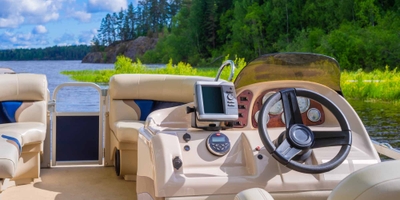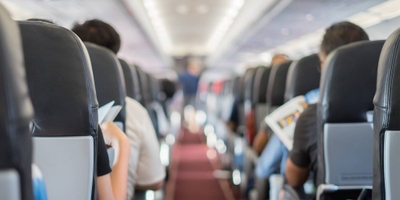What is a capsized boat?
3 min read
When a boat capsizes, it rolls onto its side or turns upside down, tossing passengers and everything else on the boat into the water. According to the U.S. Coast Guard, capsizing is one of the top causes of boating injuries and fatalities. Before leaving the dock, it's important to understand what causes boats to capsize, how to prevent it, and what to do if a boat capsizes while you're on board.
What causes a boat to capsize?
When a boat capsizes, it may be due to excess weight, uneven weight distribution, inclement weather, leaks, waves or sharp turns. Boats have a maximum capacity limit for a reason. If you overload a boat with too many people or supplies, you increase the risk of capsizing. Evenly distributing the weight of the passengers and supplies onboard can be just as crucial as not overloading it. If there's too much weight in one area, you're more likely to tip over.
Mother Nature can cause trouble for even the most experienced captains. Heavy rain and wind may cause boats to become less stable and more prone to capsizing. If your boat has a leak that's letting in water, the excess weight can throw you off balance. Check the drain plugs and fittings to ensure the water stays where it belongs — outside of your boat.
Whether they're from the wake of another boat or the natural churn of the water, waves create instability that can turn your boat upside down. Just as speeding can increase your risk of an accident on the road, excess speed and sharp turns increase your risk of capsizing on the water.
How to prevent a boat from capsizing
Taking the proper precautions can reduce the risk of your boat capsizing. Secure any cargo in your vessel. Avoid going out on the water in bad weather and always slow down if the water is choppy. Use appropriate speed, and slow down when turning.
Before you leave the dock, spread out your passengers and their belongings so there isn't too much weight in one area of the boat. Be mindful of other boaters around you so that you can adjust as necessary. The weather forecast could change quickly, even if meteorologists in your area predicted clear skies and smooth sailing earlier in the day. Keep a marine radio onboard and listen to the National Oceanic and Atmospheric Administration's (NOAA) continuous weather broadcasts to stay on top of any changes to the forecast.
Everyone on board should wear a life jacket the entire time they're on the boat. Put flares, extra life jackets, and distress signals in a waterproof bag you can access if your boat capsizes. You should also make a float plan. In addition, keep an Emergency Position-Indicating Radio Beacon (EPIRB) on board. An AIS EPIRB can send an alert to other AIS equipped vessels.
What should you do if your boat capsizes?
Account for everyone who was on board. If someone is missing, they could be trapped under the boat. If you can get your boat upright again, do it. If you can't, climb onto the hull. Capsized boats don't often sink, and getting out of the water will help you stay warm longer. Stay with the boat and hang on. A boat is much easier to spot than a couple of people floating in the water.
If you have an EPIRB, use it to signal for help. If not, wait until someone is likely to see your flare before sending it up. Someone may either come to your aid or send help when they see your distress signal, but it may take time. Do your best to stay calm while waiting.
Will boat insurance cover a capsized boat?
Boat comprehensive coverage or collision coverage can pay for damage to your capsized boat, regardless of fault, whether the cause is a collision with another watercraft or object (even if it's submerged) or severe weather.
What if my boat simply gets stranded?
Sign & Glide®-on-water towing is an optional boat insurance coverage from Progressive that pays for jump starts, soft un-groundings, fuel delivery (cost of fuel not included), and towing if your boat is simply disabled on the water.





